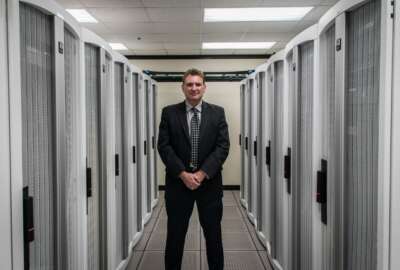
January budget forecasts out, telework and legacy modernization in
States will need to completely refashion their January budget forecasts in light of the coronavirus, from normalizing employee telework and modernizing legacy u...
In California they call it the May Revise. But each state has its own name for it — the annual ritual whereby the original state budget usually announced by the governor in early January is reviewed and debated, with give and take from the governor’s office.
This continues over the following six months until a final budget is agreed upon and produced, usually just before the start of most states’ fiscal year on July 1.
Considering that our whole world has change dramatically since these original budgets were produced, perhaps “revised” may be a bit of an understatement. With just under three months to go before the final budgets are approved, as they must be in almost all states, predictions about what will happen are difficult, especially since it’s the future as Yogi has reminded us.
Add to this situation: The annual spending surge which accompanies the last few months of each fiscal year — the habitual, if not time-honored tradition, whereby government agencies scramble to spend out their current budgets which are most often bulging with unspent dollars due to slow procurement processes, poor budgetary controls, bureaucratic bottlenecks, basic human procrastination, most likely, all the above. Use it or lose it, as they say.
New state budgets due by July 1
Nevertheless, it’s fairly certain — no, it is certain, that we’ll be seeing significant redirection of state and local — and federal, but they have until October — budgets from those produced in the halcyon days of early January.
Some developments, in spite of the Yankee catcher’s admonitions, are as certain as death and taxes (perhaps a poor choice of words these days). Of course, we’ll see significant new investment in public health infrastructure, medical devices and supplies, a restructuring of the US drug manufacturing and supply chain away from foreign sources especially China. Hopefully we will see a long overdue facilitation of training and certification for medical professionals, and perhaps most importantly refocus our primary national public health institution, the Centers for Disease Control and Prevention, on infectious diseases and away from nonessential issues like secondhand smoke, sodium and the need for more exercise?
From an IT perspective, improvements will certainly confront a target rich environment as well, not unlike the challenges we already face, i.e., collecting data, storing it, securing it, analyzing it and making it available to the appropriate people in a timely manner. And while this has happened to a great extent during the coronavirus pandemic, a closer examination of the definitions of cases, hospitalizations, cause of death and recovery, etc., there’s admittedly room for improvement.
Focus on telework, modernization of legacy applications
On a more micro level, and while it might be an inopportune time to employ the trope about Chinese characters for crisis signifying “danger” and “opportunity,” certainly one can see the occasion presents itself whereby government must fully embrace a telework environment and the modernization of ancient, mission critical eligibility and case management systems. The former reflect what has always been known. Perfunctory attention and resources invested in heretofore, for the most part, hypothetical disaster recovery and continuity of operations scenarios. The latter are the legacy nightmares, computer applications, coaxed along through their third and fourth decade, and “MacGuyvered” together with spit and bailing wire by our COBOL annuitants.
The legacy application most featured, and maligned, these days is unemployment insurance (UI) systems, overwhelmed by literally 1,500% jumps in weekly applications from a year ago, affecting states from California to New Jersey, and everywhere in between. Unfortunately the road to hell is paved with skulls of former chief information officers and contractors who were unsuccessful in their attempts to “modernize” these dinosaurs. Their forays were thwarted by a legion of issues and challenges too numerous to elaborate upon here.
However, the pandemic again has brightly revealed their vulnerability. UI systems, in addition to Medicaid, child welfare, welfare support and other related state health and social service eligibility systems are for the most part primarily funded by the federal government. It’s time for state governments to step up with federal support and direction to retire these state anachronisms, replacing them with citizen centric applications exuding the best of the private tech companies’ virtual experience.
And finally, the pandemic has finally forced state governments into professional telework, not just as a part-time novelty. And while to date operations have been fairly successful for the most part, the jury is still out. Regardless, time will reveal a more comprehensive picture, with best practices and many, many lessons learned from poor practices as well. States will need to study and absorb these experiences to fashion cohesive plans to normalize fully functioning telework options for their employees, secure in the understanding that these options will convert as seamlessly as possible to mandatory compliance if, or probably when, it’s required again, God forbid.
Copyright © 2024 Federal News Network. All rights reserved. This website is not intended for users located within the European Economic Area.
Related Stories

Part 1: Nebraska’s centralized approach to cybersecurity, compliance in age of coronavirus





